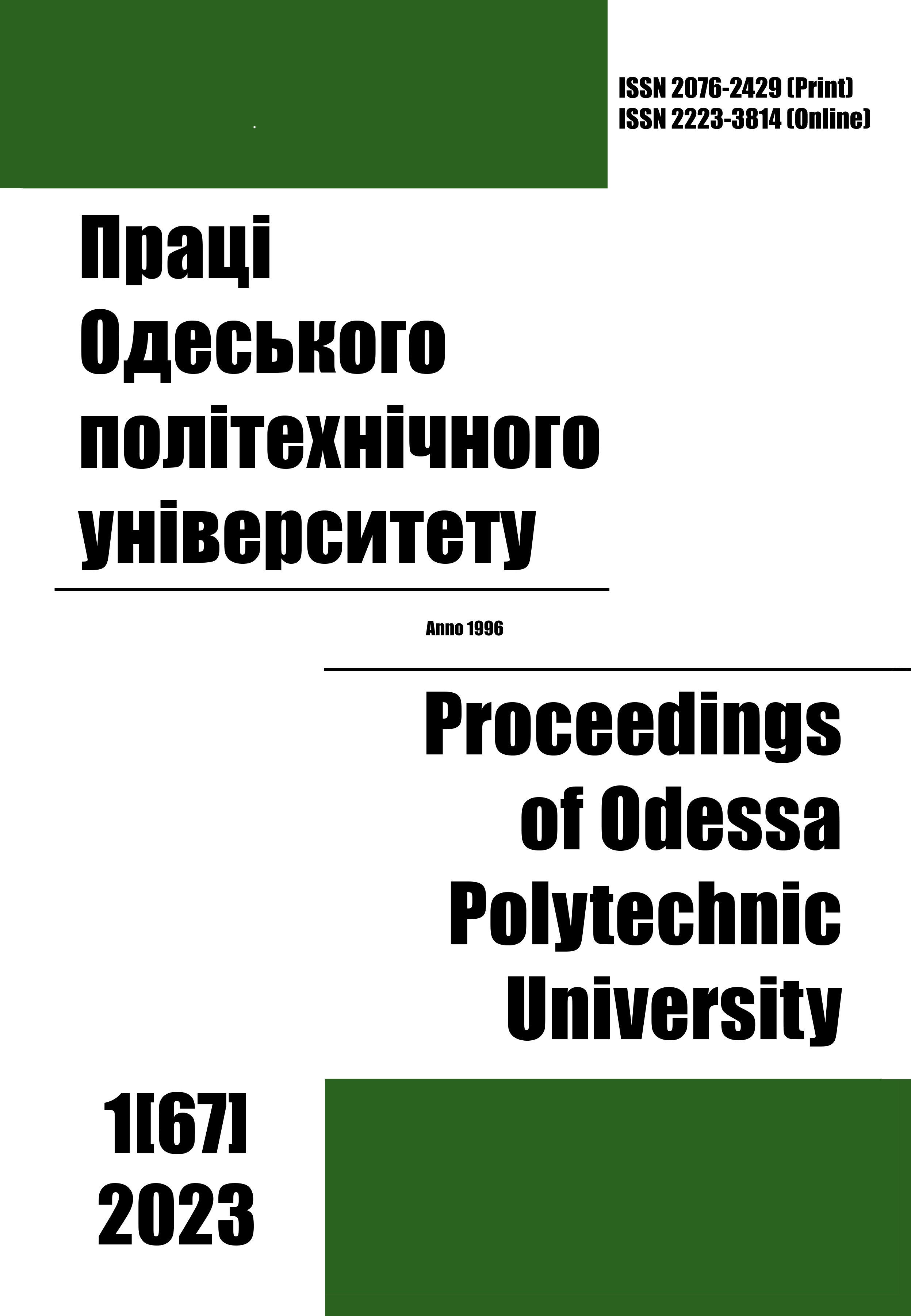Circuit design of transformation and transfer processes in heterogeneous medium
DOI:
https://doi.org/10.15276/opu.1.67.2023.13Keywords:
circuit design, heterogeneous medium, internal processesAbstract
The article is devoted to the study of the possibility of using the principles of circuit design when modeling internal processes occurring in a heterogeneous medium. Modern complex objects in mechanical engineering (elements, processes, components, mixtures, alloys, etc.) can be represented in the form of circuit diagrams, which are understood as a set of elements and relationships between them. Such schemes make it possible to create an unambiguous model of this object. In addition, circuit diagrams allow you to optimize them (and hence objects) in the process of construction: change the number of elements; change the characteristics of the elements. The main advantage of this approach stems from the fact that at present there are special programs, including computer programs, that make it possible to build such models based on the purpose of the functioning of the designed object and the possibilities of its creation. Circuit design in mechanics is the creation of a concept diagram of a future object (method, device, substance), which, when completed (manufactured), will allow the object to achieve its goals. The process of transformation and transfer of an intensive parameter in heterogeneous media is considered, using the example of the propagation of elastic oscillations and thermal processes in them, which is interesting from the point of view of modeling the processes that take place in these media during their flaw detection by the acoustic infrared thermometric method, which is based on the interaction of structural defects with acoustic waves. At the same time, thermal energy is generated at their boundaries, which is an indicator not only of the presence of cracks, but also of their direction and development. When modeling damage such as cracks and fractures in products made of non-metallic heterogeneous materials, special additional elements are introduced that simulate structural integrity violations – relay elements.
Downloads
References
Балан С.А., Становская Т.П., Становский А.Л. Проектирование и управление в машиноведении: Монография. Одесса : Астропринт, 2002. 376 с.
Становский А.Л., Герганов М.Л., Онищенко А.Г. Моделирование процессов массопереноса через пористые материалы. Вісник наукових праць. 2002. Том 1. С. 64–68.
Становський О.Л., Балан О.С., Становська Т.П. Зниження часової складності побудови структури схемотехнічних моделей теплових процесів. Труды Одесского политехнического университета. 2002. Спецвыпуск. С. 76–79.
Соломатов В.И., Вырова В.Н., Дорофеев В.С., Сиренко А.В. Композиционные строительные материалы и конструкции пониженной материалоемкости. K. : Будивэльнык, 1991. 144 с.
Забашта В.Ф., Кривов Г.О., Бондарь В.Г. Полимерные композиционные материалы конструкционного назначения. К. : Техника, 1993. 160 с.
Kainer K.U. Metrix Composites. Custom-made Materials for Automative and Aerospace Engineering WILEY – VCH. 2006, 15 p.
Yamamura T., Tokuse M., Furushima T. Inorganic fiber reinforced metallic composite material. US 4622270, 1986.
Тонконогий В.М., Голофєєва М.О., Балан В.О. Дослідження характеристик розсіювання енергії коливань в базових деталях верстатів з синтеграну. Резание и инструмент в технологических системах: Междунар. науч.-техн. сб. 2015. Вып. 85. С. 282–287.
Пелех Б.Л., Салек Б.И. Экспериментальные методы исследования динамических свойств композиционных структур / Отв. Ред. В.В. Васильев. Киев : Наук. думка, 1990. 136 с.
Ляшенко В.П., Кобильська О.Б., Дем’янченко О.П. Математичні моделі теплообміну з умовами імпедансного типу у багатошарових областях. Вісник Кременчуцького національного університету імені Михайла остроградського. 2017. Вип. 6. Ч. 1. С. 37–43.
Wang J., Zheng S. Visible and Infrared image fusion method based on wavelet transform and YUV. Journal of Northwestern Poly Technical University. 2013. 3(33). P. 208–211.
Shiryaev V.V., Khorev V.S. Thermal control of impact damage in CFRP using ultrasonic stimulation. Control and Diagnostics, 2011. №11. С. 11–14.
Kobilskaya E., Lyashenko V., Hryhorova T. Integral conditions in the inverse heat conduction problems. Mathematical Modeling and Computing. 2020. Vol. 7 №2. Р. 219–227.






